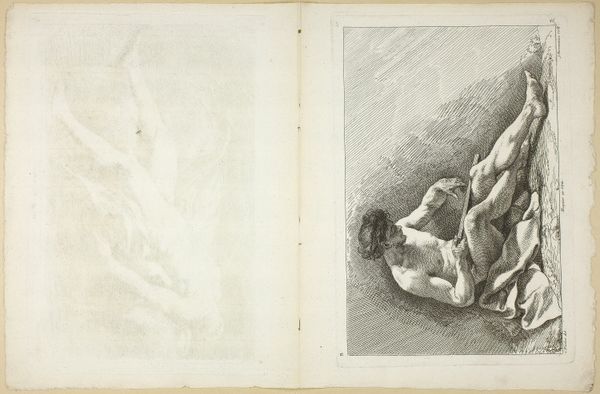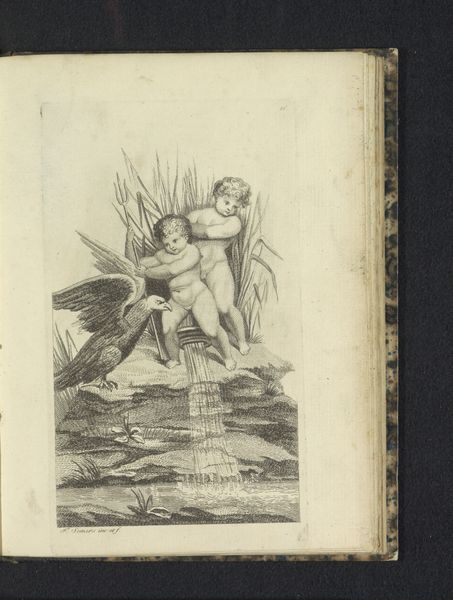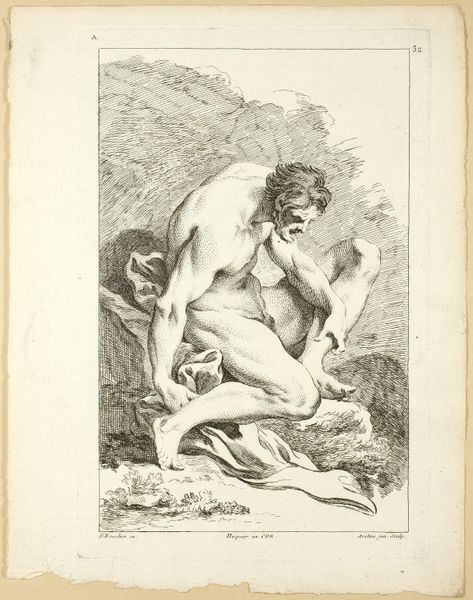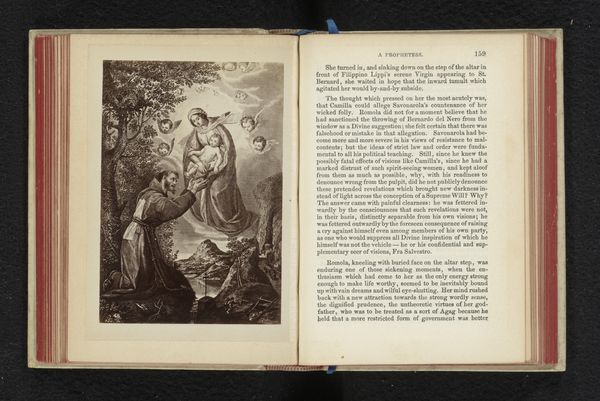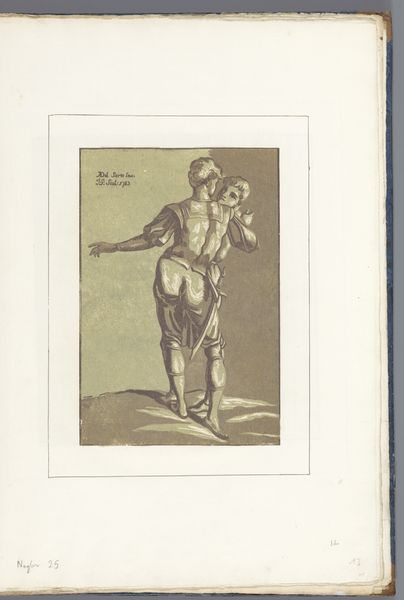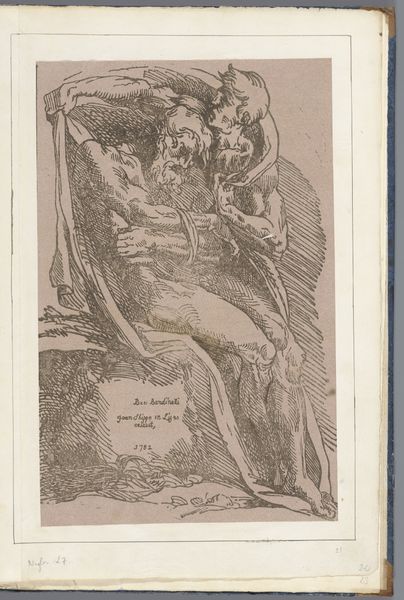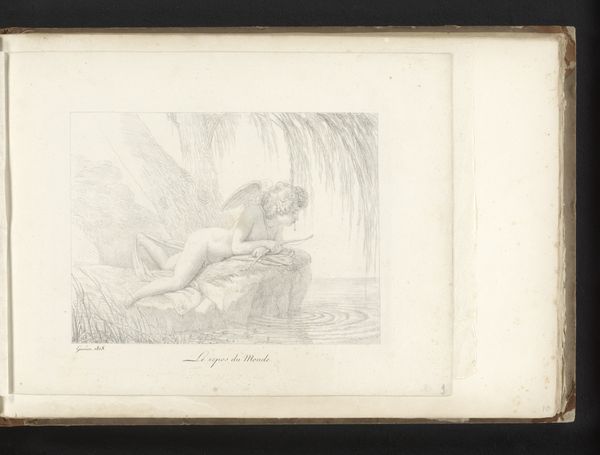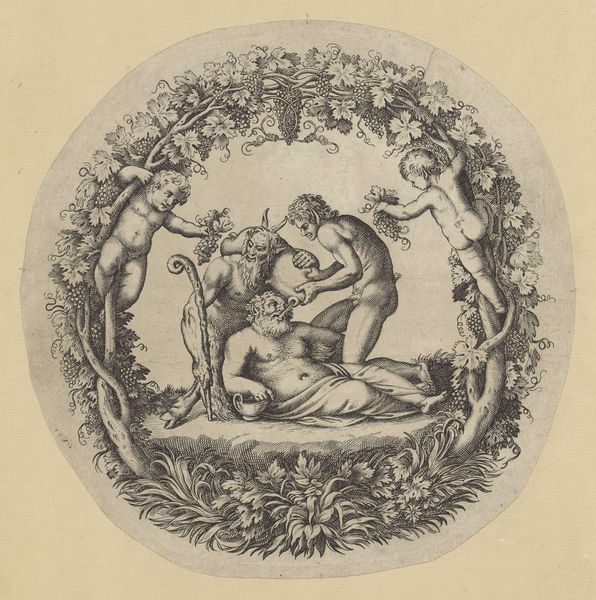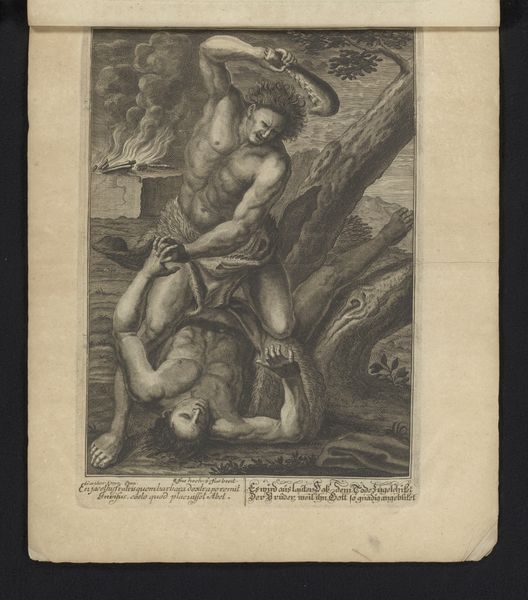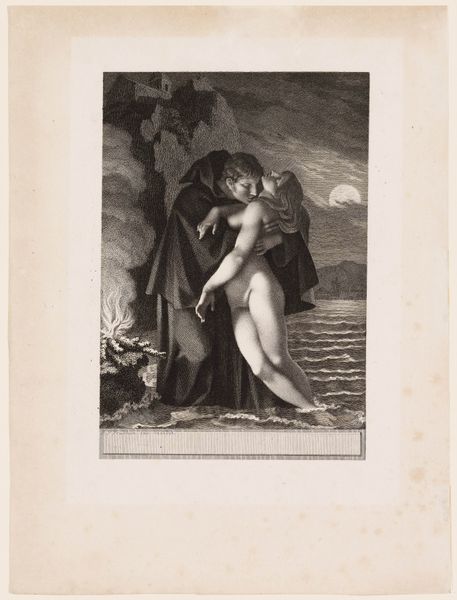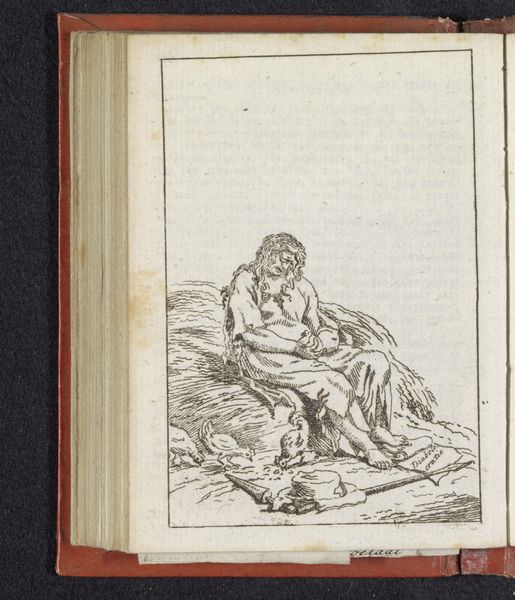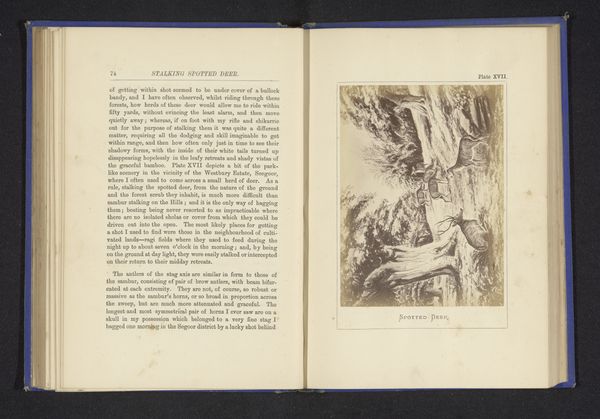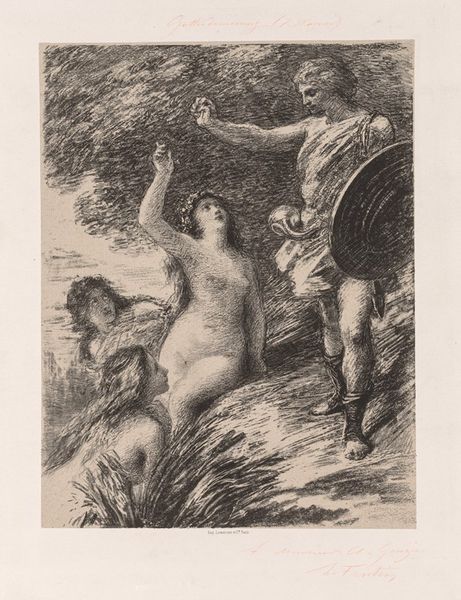![Dancing Nude and Advertisement for Eugène Verneau's "Estampes décoratives" [verso] by Louis Anquetin](/_next/image?url=https%3A%2F%2Fd2w8kbdekdi1gv.cloudfront.net%2FeyJidWNrZXQiOiAiYXJ0ZXJhLWltYWdlcy1idWNrZXQiLCAia2V5IjogImFydHdvcmtzL2M4ZTQ1NzE4LTc3Y2QtNDE1ZS04Zjg5LTdlMzdlMDg3ODEwMi9jOGU0NTcxOC03N2NkLTQxNWUtOGY4OS03ZTM3ZTA4NzgxMDJfZnVsbC5qcGciLCAiZWRpdHMiOiB7InJlc2l6ZSI6IHsid2lkdGgiOiAxOTIwLCAiaGVpZ2h0IjogMTkyMCwgImZpdCI6ICJpbnNpZGUifX19&w=3840&q=75)
Dancing Nude and Advertisement for Eugène Verneau's "Estampes décoratives" [verso] 1897
0:00
0:00
drawing, lithograph, print
#
pencil drawn
#
drawing
#
lithograph
# print
#
pencil sketch
#
figuration
#
nude
Dimensions: sheet: 31.8 x 49.4 cm (12 1/2 x 19 7/16 in.)
Copyright: National Gallery of Art: CC0 1.0
Curator: What strikes me immediately about this sketch is its sense of lightness. It’s like a captured breath—or a body freed in dance, caught between intention and abandon. Editor: You're responding, no doubt, to the flowing lines, the unfinished quality... it really is just a quick sketch! It's entitled "Dancing Nude and Advertisement for Eugène Verneau's 'Estampes décoratives' [verso]" by Louis Anquetin from 1897, a pencil drawing and lithograph, or print if you prefer. Curator: Right, it’s almost ghostly—as if the dancer is emerging from the paper, or perhaps being erased by it. It's the kind of preliminary work where the creative subconscious is still at play. Tell me about the advertisement part... what *are* “Estampes décoratives"? Editor: Verneau was an printer specializing in decorative prints. Here we see advertising copy on the back for Henri Riviere prints featuring different landscapes with color illustrations, twelve in total and a format size of 64 by 90. Each would set you back thirty francs each or ten with regular printing on paper instead of "chine." Anquetin made this on the very back of an advertisement--art and commerce are never far apart! Curator: So even the creative process of art-making is bound within commerce… How very turn-of-the-century! Still, to consider the dancing nude in context is… surprising. Anquetin really makes a dialogue. It almost feels as if the nude is resisting the strictures of bourgeois interior design advertised. Editor: Maybe resisting but also benefitting; after all, decorative arts played a crucial role in bringing art into everyday lives. They were important venues for avant-garde artists looking to escape traditional exhibition frameworks like the academy—especially artists like Anquetin. Curator: Absolutely, but maybe there's something beautiful too in recognizing that tension, in realizing the many lives an image or an artwork can inhabit—between the sacred and the commercial. Editor: Perhaps...I find the historical grounding reveals a lot about not only the intent of its creator, but its potential audience, where the artist found his income, and the way art was interwoven into everyday living at the time. Curator: For me, though, it's a peek into a dance between worlds--that ephemeral motion trying to solidify into shape and something more eternal in our eyes.
Comments
No comments
Be the first to comment and join the conversation on the ultimate creative platform.
